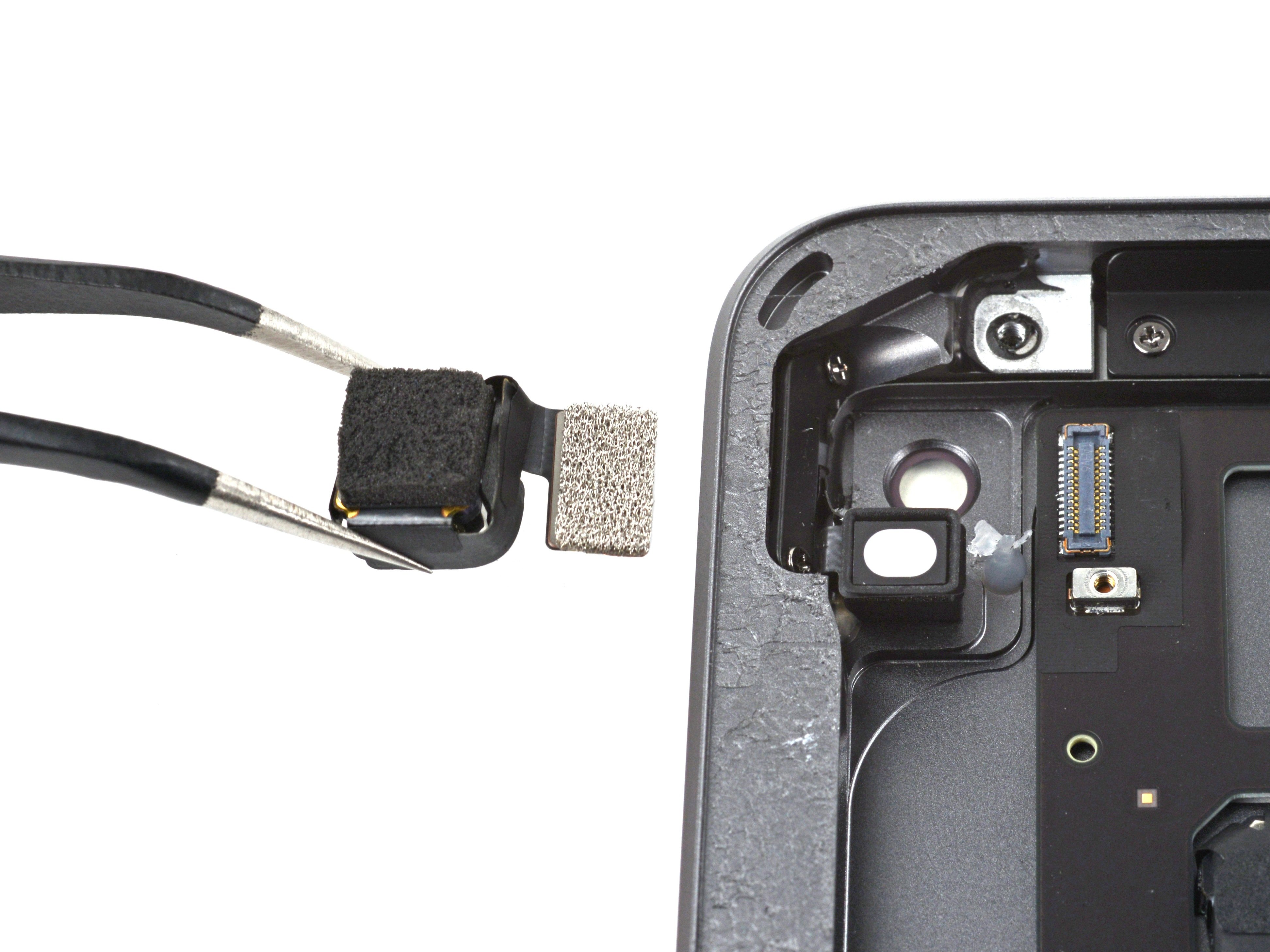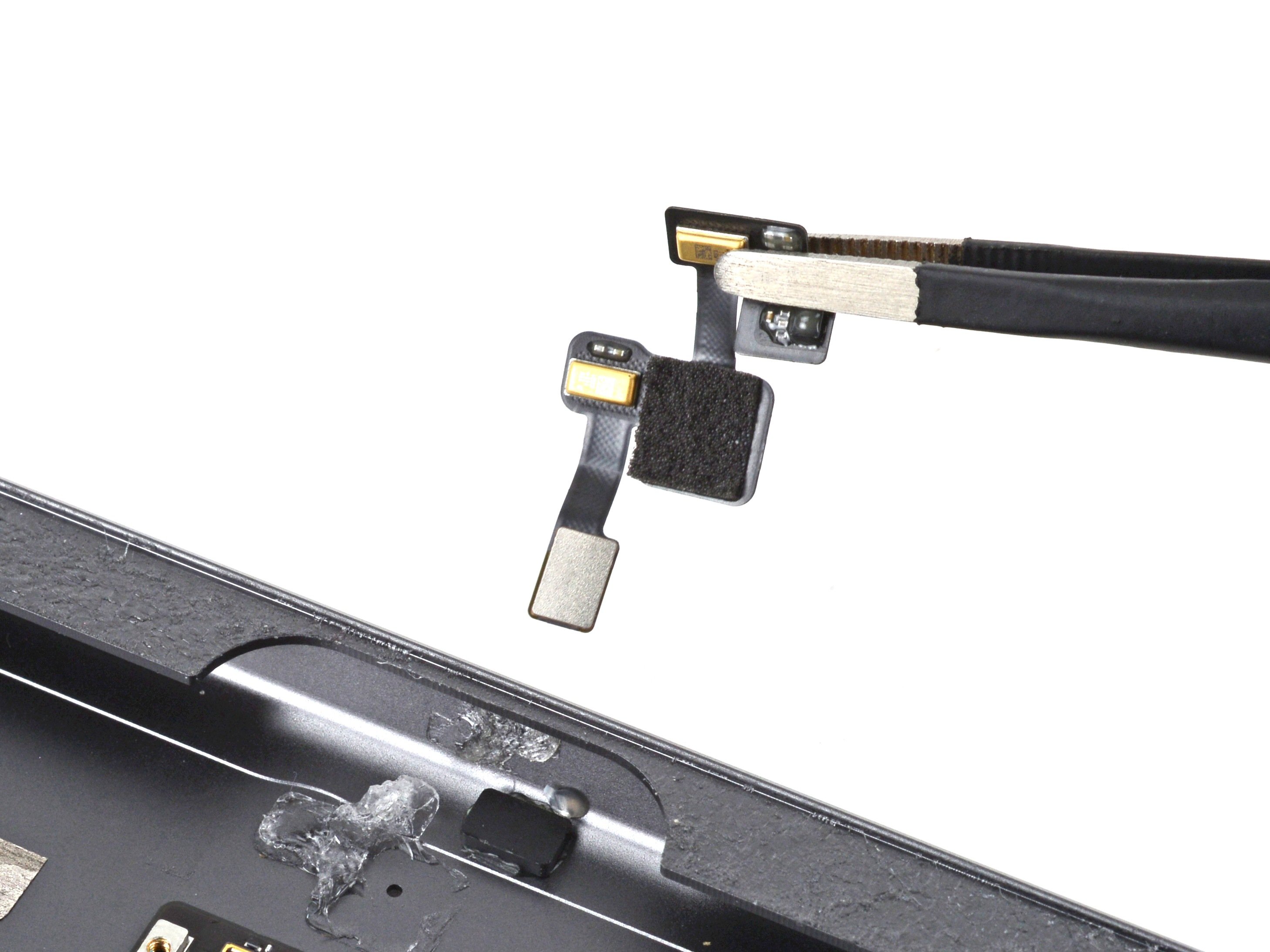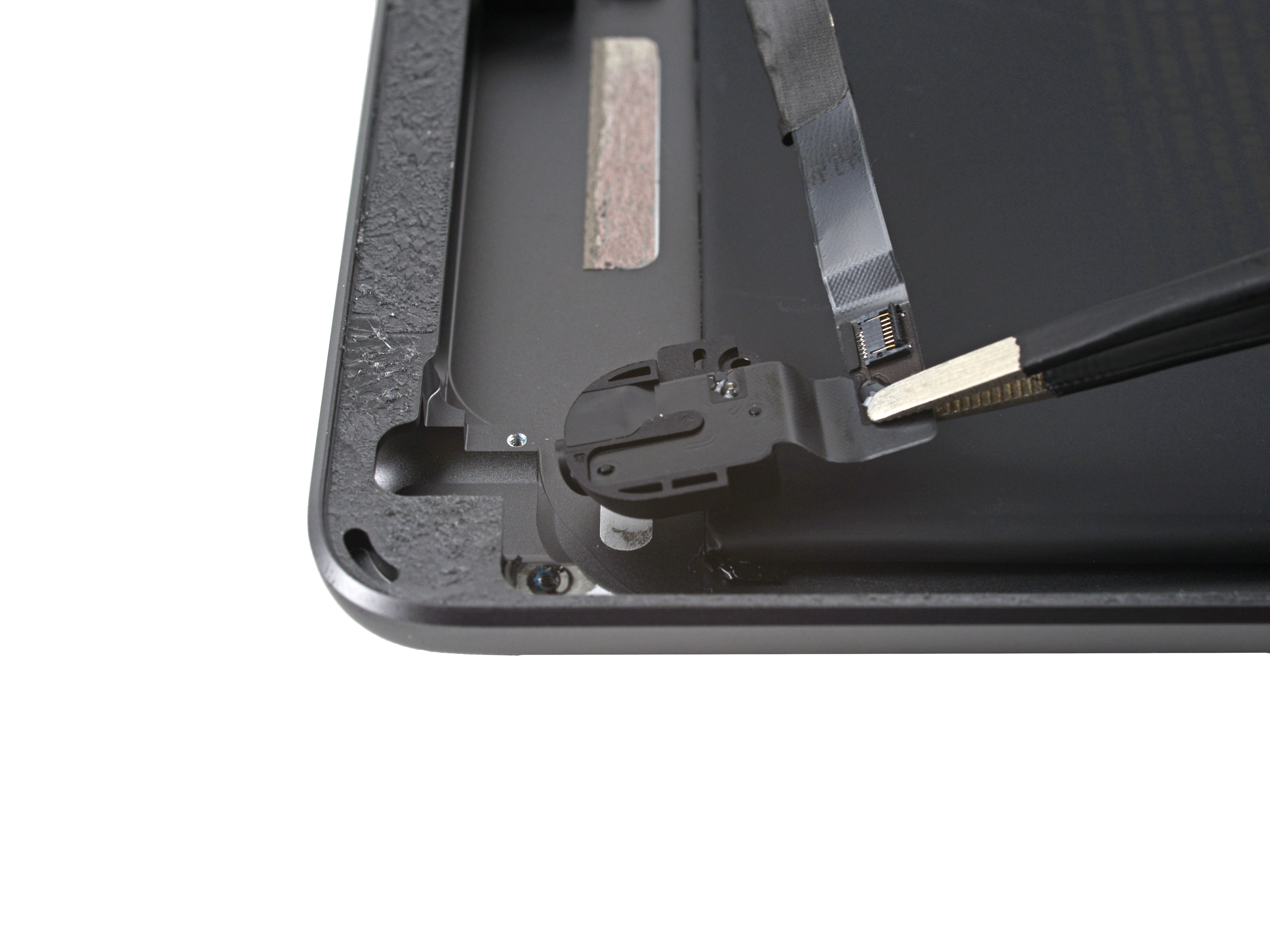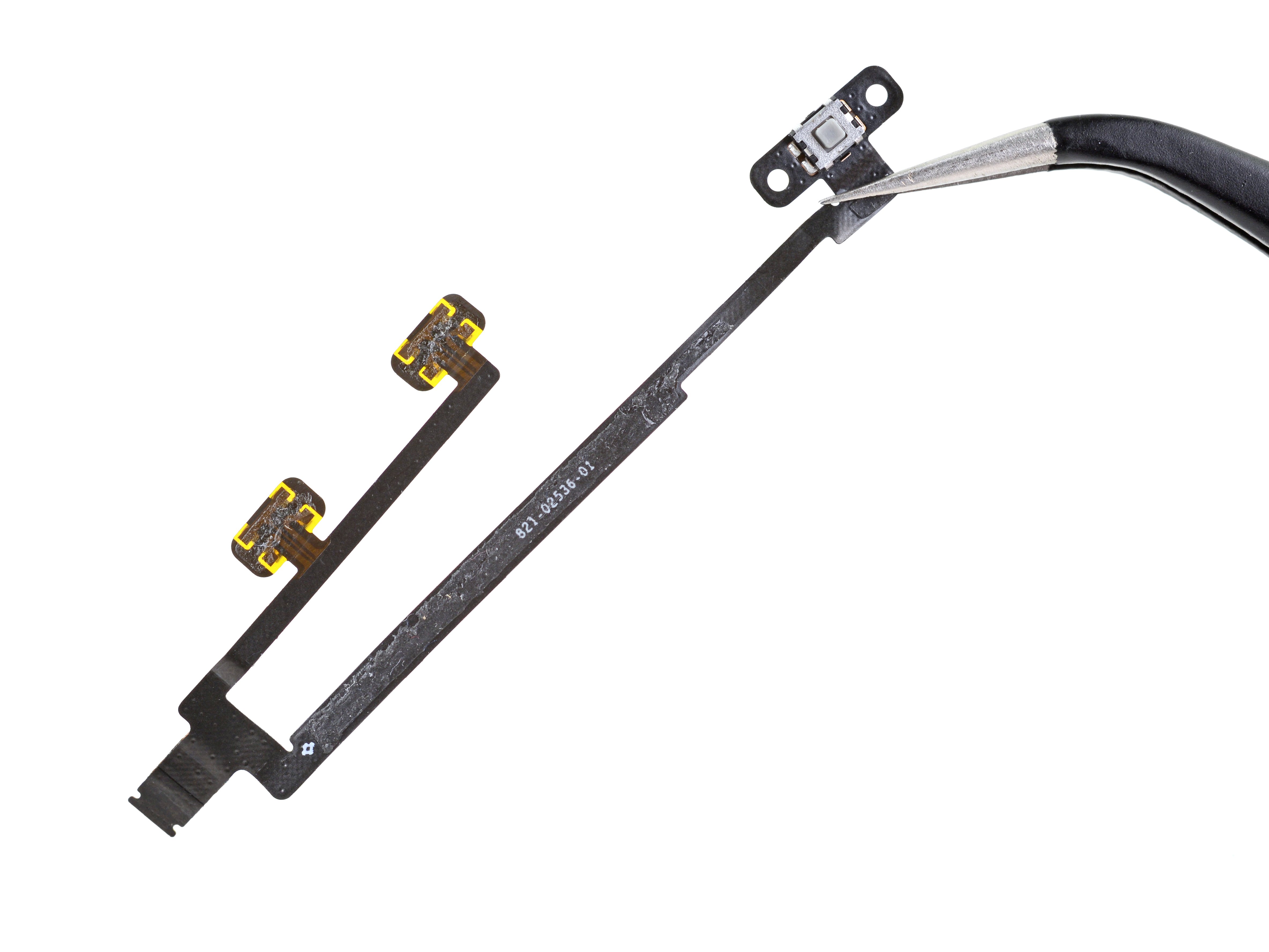How to Replace iPad Front Panel GSM Guide
Duration: 45 minutes
Steps: 49 Steps
Hey there! Just a friendly reminder to be extra careful while handling your device. We wouldn’t want any accidental mishaps to happen. If things get a bit tricky, remember, you can always schedule a repair. You’ve got this!
Welcome to your ultimate guide for swapping out that plain front panel! If you’ve got a Front Panel Assembly ready to roll, pause right here before you tackle the home button on your old panel. Once you’re set, just flip those steps around to get your shiny new front panel assembly in place. And remember, if you ever need a hand, just schedule a repair!
Step 1
Before diving in, give your microwave a quick clean. Trust us, you don’t want any sticky residue hitching a ride on your iOpener.
– Center the iOpener in the microwave like a pro!
Tools Used
Step 2
Hey there, just a friendly reminder to keep an eye on that iOpener during your repair journey! Overheating it could lead to some dramatic bursts, and we definitely don’t want that. So, let’s keep the heat below 100˚C (212˚F) for a smooth experience.
If you notice the iOpener looking a little puffy, it’s best to steer clear—safety first!
Still feeling a bit of heat in the middle? No worries! Just keep using it while it cools down a bit more before you give it another warm-up. A well-heated iOpener should stay cozy for up to 10 minutes. You’ve got this!
– Give your iOpener a warm hug in the microwave for thirty seconds.
– As you work through your repair adventure, keep the iOpener cozy by giving it another thirty-second microwave break whenever it starts to cool off.
Tools Used
Step 3
Watch out! The iOpener can get pretty toasty, so handle it with care. An oven mitt might just be your best friend here.
– Carefully take the iOpener out of the microwave, gripping it by one of the flat ends to keep your fingers safe from the hot center.
Tools Used
Step 4
If a microwave isn’t in your kitchen arsenal, no worries! Just pop your iOpener into a pot of boiling water to warm it up.
– Grab a pot or pan and fill it up with enough water to give your iOpener a nice, warm bath.
– Turn up the heat and let that water reach a rolling boil. Once it’s bubbling away, turn off the heat.
– Carefully place your iOpener into the hot water for about 2-3 minutes. Just make sure it’s fully submerged and getting all those cozy vibes.
– Using tongs (because safety first!), fish out that heated iOpener from the hot water.
– Give it a good drying with a towel to keep things nice and tidy.
– And voilà! Your iOpener is all set to roll. If it needs a little extra warmth later, just repeat the boiling water dance for another 2-3 minutes.
Tools Used
Step 5
Put on those stylish safety glasses to shield your peepers, and watch out for that LCD screen – we want it to stay in one piece!
– If your display glass is a bit cracked, let’s keep it from shattering further and avoid any mishaps during your repair journey by applying some tape to the glass.
– Grab some clear packing tape and lay down overlapping strips over the iPad’s display until you’ve got the entire face nicely covered.
– Try your best to stick to the rest of the guide as laid out. Just a heads up, once the glass starts to break, it might keep cracking while you work, and you may want to use a metal prying tool to gently scoop the glass out.
Step 6
Hey there! Just a friendly reminder that you might be dealing with some sharp glass during this process. So, why not rock those safety glasses? They’ll keep those pesky shards at bay while you work your magic!
– Place the iOpener flat against the right edge of your iPad, giving it a gentle press to ensure a snug fit between the iPad’s surface and the iOpener.
– Let that trusty bag lounge on the iPad for about 90 seconds before diving in to open up the front panel.
Tools Used
Step 7
Getting that wedged tip of the opening tool snugly between the glass and plastic might take a bit of elbow grease! Just take your time and be gentle, wiggling the plastic opening tool back and forth as needed. You’ve got this!
– Hey there! Look closely at your iPad – there’s a sneaky little gap in the adhesive ring up in the upper right corner, about 2.0 inches (~5 cm) from the top. Time to take advantage of this tiny weakness!
– Now, let’s get to work! Line up your tool with the mute button. Gently insert the very tip of a plastic opening tool into that gap between the front glass and the plastic bezel. Just a little nudge to widen the crack will do the trick!
Step 9
– With the plastic opening tool snugly positioned between the front glass and the plastic bezel, gently slide a plastic opening pick into the gap right next to it. You’re doing great!
Step 10
– Gently take out the plastic opening tool from your iPad, and slide the opening pick a little deeper under the front glass, about half an inch down. You’re doing great!
Step 12
The adhesive is super sticky, so you might need to put in some elbow grease. Take your time and be gentle!
If you spot the tip of the opening pick peeking out from beneath the front glass, gently pull it out a bit. While having the pick this deep is safe, it might leave some adhesive residue on the LCD. No biggie, just keep it in mind!
– While the iOpener works its magic on the bottom edge, start peeling away the adhesive from the right side of your iPad.
– Gently slide the opening pick down along the edge of the iPad, letting it do its thing and release that stubborn adhesive as you go.
Tools Used
Step 13
As you start to release that pesky adhesive, you might find it handy to slide the warmed iOpener back onto the right edge of your iPad. Just keep in mind, this little move is all about how long your iPad has been cooling down while you were busy working your magic.
– If the opening pick gets stuck in the adhesive, gently ‘roll’ it along the side of the iPad to keep loosening that stubborn glue.
Tools Used
Step 14
– Before you pop that first opening pick into the bottom corner of your iPad, slide a second pick under the right edge of the front glass to keep that adhesive from getting too cozy again.
– Give your iOpener a quick reheat, then place it at the top edge of the iPad for some extra warmth.
Tools Used
Step 15
Hey there! Just a heads-up: the Wi-Fi antenna is snugly attached to the bottom right edge of the iPad’s rear case with screws and a cable. Given the way it’s positioned, it’s super important to handle it gently. A little care goes a long way—otherwise, you might accidentally cause some serious damage to that antenna. So, take it slow and steady!
– Alright, folks, it’s time to proceed with a bit of care and finesse!
– You’ll need to gently detach the adhesive that’s keeping the antenna snug against the front panel. Just make sure to treat those delicate connections at the bottom of the iPad with the utmost respect! Follow the upcoming steps closely to get it just right.
Step 16
Be careful not to slide the pick past the bottom right corner. Doing so might put a dent in your Wi-Fi antenna, and we wouldn’t want that!
– Gently run the opening pick along the bottom right corner of your iPad to free up that pesky adhesive. You’ve got this!
Step 17
As you glide that opening pick along the bottom right edge of the front panel, keep in mind that the Wi-Fi antenna is lurking close to the corner. It’s a little sneaky and can get cut if we don’t handle the adhesive with care!
Keep the pick snugly nestled under the front glass—just a smidge! Pull it out a tad so that about 1/8″ (3 mm) of the tip is still cozy beneath the glass. You’ve got this!
– Gently slide the opening pick’s tip along the bottom edge of your iPad to release the adhesive securing the Wi-Fi antenna. You’ve got this!
Step 18
– After you’ve gracefully glided past the Wi-Fi antenna (about 3″ (75 mm) from the right edge or snug next to the home button), it’s time to reinsert that trusty opening pick all the way in.
– Now, give that pick a gentle slide to the right to release the adhesive that’s holding the Wi-Fi antenna to the front glass. You’re doing great!
Step 19
Keep your iOpener’s heating time in check—no more than a minute at once, and give it a cool-down of at least two minutes before firing it up again. Your patience will pay off!
– Keep on peeling that adhesive away from the bottom of your iPad! Gently pull the opening pick out just enough to navigate around the home button, then pop it back in, but make sure to go about 1/2 inch (10 mm) deep once you’re past that home button. You’re doing great!
Tools Used
Step 20
– Keep peeling back that adhesive along the bottom edge of the iPad like a pro!
– Just slide the opening pick in and let it chill under the front glass near the home button.
Step 22
If your adhesive has gotten a bit too chilly, simply swap out the iOpener along the top edge and keep going. If your iOpener has also turned cold, just give it a little reheat to get back in the game!
– Gently glide the opening pick along the top edge of your iPad, giving it a little pull to navigate around the front-facing camera bracket.
– This adhesive is no joke—it’s thick! So, channel your inner strength and apply a bit of force, but remember to take it slow and steady. We want to avoid any slips that could hurt you or your iPad.
– If the opening pick starts to feel like it’s stuck in the adhesive, just give it a little roll, like we showed you in step 9.
Tools Used
Step 23
If the adhesive is feeling cozy, go ahead and take that iOpener off the iPad for some easy access. But if it’s still a bit clingy, just give the iOpener another warm-up and rest it on the left edge while you work your magic.
– Keep on peeling away that sticky stuff along the top edge of the iPad, and gently slide your opening pick around the top left corner like a pro.
Tools Used
Step 24
The digitizer cable is hanging out about 2″ (50 mm) from the bottom of your iPad. When you get to around 2.25″ (60 mm) from the bottom, it’s time to stop sliding that pick!
– Gently glide the opening pick along the left side of your iPad, peeling away the adhesive as you go. The adhesive is pretty thin here thanks to the digitizer running along that whole edge. Just be careful not to go too deep—keep it to a max of 1/2 inch (10 mm) so you don’t accidentally mess up the digitizer.
Step 25
Be super careful here! The digitizer cable is hanging out just about an inch (25 mm) from the bottom of the iPad. Take your time and proceed with caution to avoid cutting this little guy.
– With the trusty opening pick still nestled under the bottom edge of your iPad, gently peel back the adhesive at the bottom left corner. You’ve got this!
Step 26
Some of the sticky stuff around the edge of your iPad might have reattached itself. If you find this to be true, gently slide a pick under the spot where the front glass is still clinging on and give that adhesive a little snip.
– Grab one of those nifty opening picks and gently lift the bottom right corner of the iPad. Then, give it a little pinch with your fingers to hold it steady!
Step 27
Watch out for any sticky stuff that might still be hanging on! Grab an opening pick and gently slice through any remaining adhesive that’s keeping the front panel snug.
– Grab your iPad by the top and bottom right corners and gently twist the front glass away from the device. You’ve got this!
– When you’re putting everything back together, remember to use a microfiber cloth and some compressed air to give that LCD a nice clean-up. Say goodbye to dust and fingerprints before sealing the glass back in place!
Step 28
The bottom left screw is hiding behind the home button ribbon cable connector. Gently slide the home button ribbon cable to the side so you can access and remove that pesky bottom left screw.
– Carefully unscrew the four 2 mm Phillips #00 screws that are holding the LCD snugly against the aluminum frame. You’ve got this!
Step 29
Handle that LCD with care! The ribbon cable is a bit delicate and might give in if you bend it too much. Keep it cool and steady!
– Grab your trusty plastic opening tool or a spudger and gently lift the right edge of the LCD out of the iPad. You’ve got this!
– Now, give that LCD a little rotation around its left edge and lay it down softly on top of the front glass panel. Nice and easy!
Tools Used
Step 30
– Grab your trusty spudger and gently lift the piece of tape that’s keeping the LCD ribbon cable connector under wraps. You’ve got this!
Tools Used
Step 31
– Gently lift the retaining flap on the LCD ribbon cable ZIF connector, like you’re unveiling a hidden treasure.
– With a little finesse, use your fingers or some tweezers to carefully pull the LCD ribbon cable out of its snug home on the logic board.
– If your iPad’s LCD screen decides to play hard to get and doesn’t light up after connecting the ZIF connector, just give it a friendly force restart! Hold down the power button and the home button for at least ten seconds until you see that lovely Apple logo pop up.
Tools Used
Step 32
– Gently lift the LCD away from the front panel without getting your fingers on the screen. You’ve got this!
Step 33
If there’s a sneaky piece of electrical tape hiding the Wi-Fi antenna, speaker cable, and home button ribbon cable, go ahead and peel it away!
Step 34
– Gently lift the retaining flap on the home button ribbon cable ZIF connector. Give it a little nudge, and you’re on your way!
Step 35
– Grab your trusty tweezers and gently pull that home button ribbon cable straight out of its cozy socket on the logic board. You’ve got this!
Tools Used
Step 37
– With the spudger in hand, gently lift the tape that’s holding the digitizer ribbon cable to the logic board. You’ve got this!
Tools Used
Step 39
– Grab your trusty spudger and use its flat end to gently pry up the adhesive holding the digitizer ribbon cable in place. You’ve got this!
– Once it’s loosened, carefully pull the digitizer ribbon cable straight out of its sockets on the logic board. Easy peasy!
Tools Used
Step 40
– Gently lift the digitizer ribbon cable and grab your trusty spudger! Use its flat end to carefully break free the adhesive that’s keeping the cable snug against the rear aluminum case. You’re doing great!
Tools Used
Step 41
– With a gentle tug, coax the digitizer ribbon cable out of its cozy spot in the aluminum frame. You’ve got this!
– Carefully lift away the front panel from the iPad. Just think of it as giving your device a little spa day!
Step 42
Just a friendly reminder to keep that iOpener nice and cozy, but not too toasty! Give it a breather for at least two minutes before you heat it up again.
The home button assembly is glued to the front panel, and it’s got a pretty strong bond. We suggest giving the adhesive a little love tap with an iOpener to make things easier for you.
– Pop that iOpener in the microwave for a minute on high power (or just thirty seconds if you’re rocking the newer gel-filled version).
– Now, gently place the warm iOpener right over the home button on the front edge of your display.
Tools Used
Step 43
– Gently lift the home button ribbon cable away from the front panel. Be careful and take your time with this part!
Step 44
– Gently slide the plastic opening tool underneath the right side of the home button assembly and give it a little nudge upwards to free that adhesive. You’re doing great!
– Now, using the same technique, let’s tackle the left side of the home button and release that adhesive too. Almost there!
– Carefully lift the home button mount away from the front panel. Look at you go!
Step 45
– Gently slide the edge of your trusty plastic opening tool under the home button mounting bracket like you’re tucking it in for a cozy nap.
– Now, glide that tool along the retaining spring bracket and watch the adhesive give way, like magic!
– Carefully lift the home button along with its mounting bracket right off the front panel, and voila!
Step 46
The camera bracket is glued to the front panel, so it’s a good idea to use an iOpener to gently warm up that adhesive. Trust us, it makes things a lot easier!
– Get ready to heat things up by following the iOpener heating instructions found in the iOpener heating section at the start of this guide. Trust us, it’s worth it!
– Now, gently place that warm iOpener right over the front-facing camera located at the top edge of your display. You’re doing great!
Tools Used
Step 47
Give the camera bracket a gentle nudge! It’ll slide about 2 mm to the left or right, depending on which way you give it a little push. You’ve got this!
– Grab your trusty spudger and use its flat end to gently nudge the camera bracket free from the sticky adhesive that’s holding it snug against the front panel. You’ve got this!
Tools Used
Step 48
– Gently lift the camera bracket off the front panel and set it aside.
Step 49
– The front panel is still hanging in there!









































































































